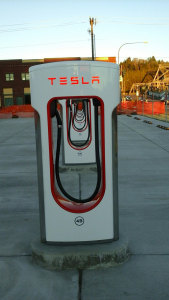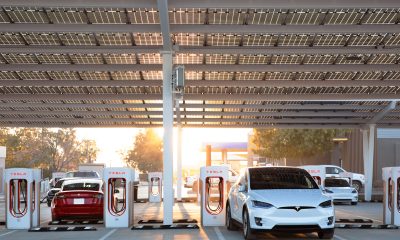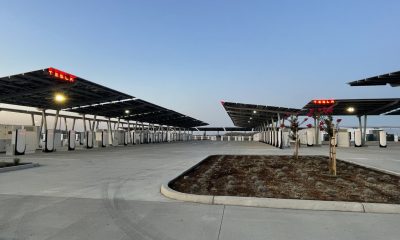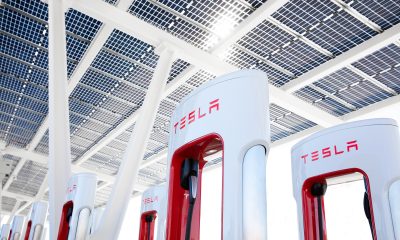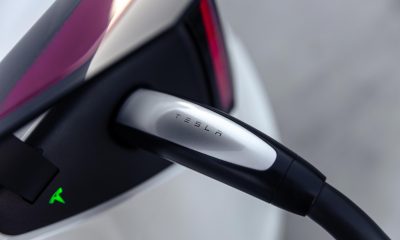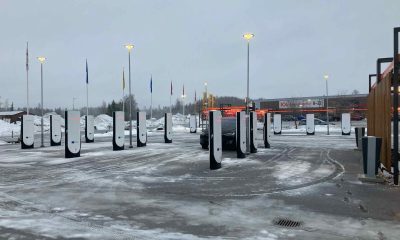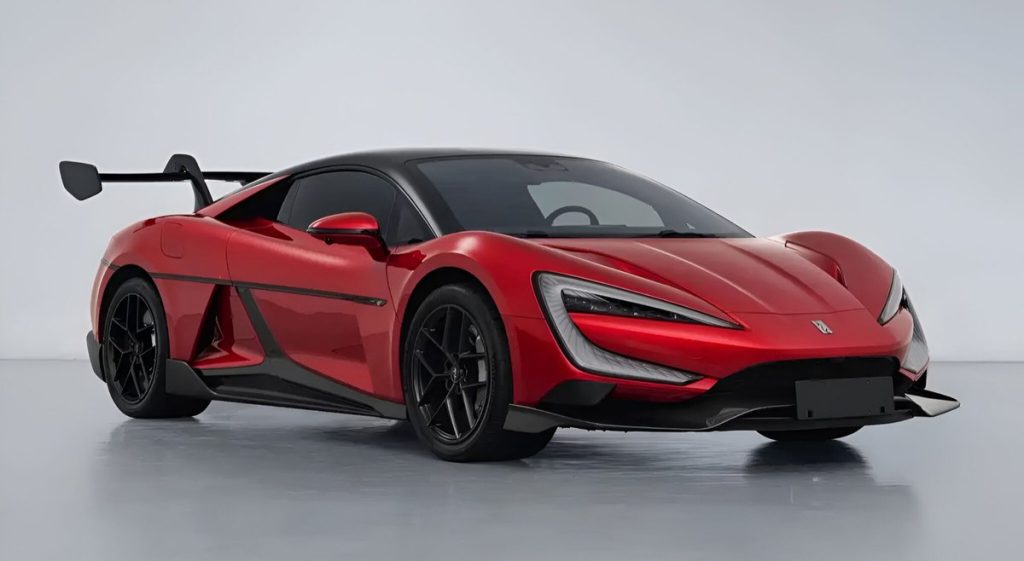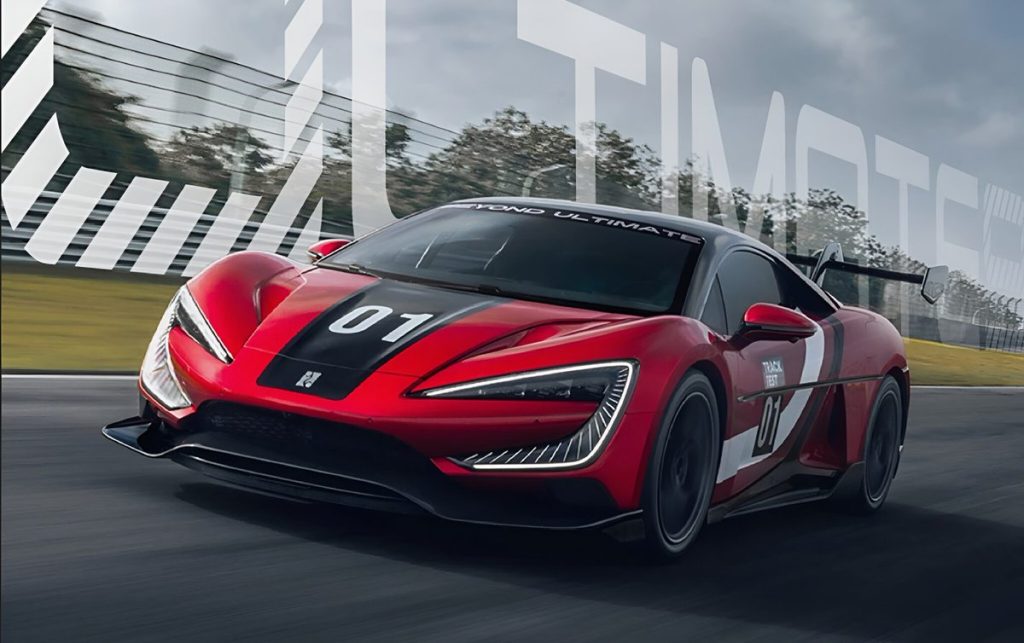News
Mayor tied to Tesla Supercharger site questioned over ‘conflict of interest’
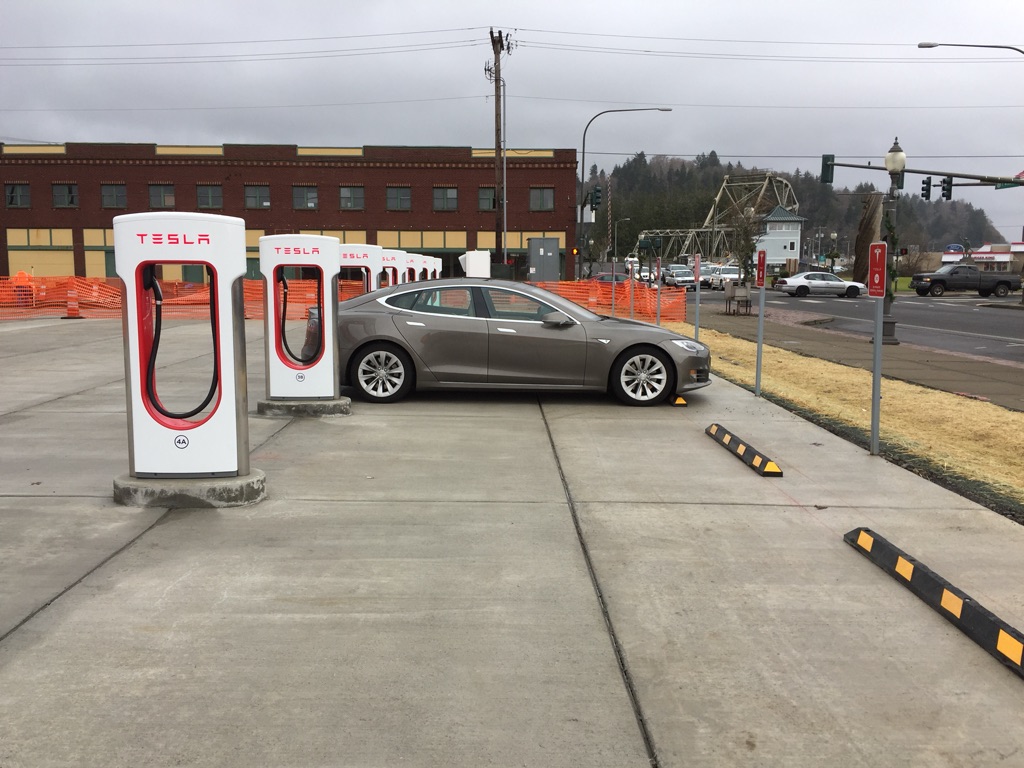
He was young. Ambitious. Gifted. One of the greatest players to ever set foot on a professional baseball diamond, “Shoeless” Joe Jackson’s career ended in tatters for his alleged role in the infamous Chicago “Black Sox scandal” of 1919.
Call it a “conflict of interest.” It involved money. Lots of it.
Something else that involves money – lots of it – is afoot in Aberdeen, Washington: A Tesla Supercharger station and a “Gateway Center.” Aberdeen Mayor Erik Larson is a staunch proponent of both.
Updated: Mayor Larson fines himself $500 for violating the state’s conflict of interest ethics code
Mayor Larson is making the rounds looking for funding to help cover the costs of Gateway Center construction which is expected to cost upwards of $8M to complete, and incorporate Tesla’s Supercharger station into the design.
Questions within the community are swirling around what appears to be a conflict of interest regarding the mayor’s involvement in the Tesla deal. Documents have surfaced showing that the mayor has, or had, a financial interest in the electric car company that’s building the Supercharger station, apparently while he was negotiating with the company to bring the project to a city-owned lot. Why the station is being built on publicly owned land rather than on a private site is also in question.
Background
Mayor Larson negotiated the original agreement with Tesla for the charging station, which could have cost the city up to $2,000 a month in utility bills. The lease agreement came before the Aberdeen City Council for approval last summer. Originally, the City of Aberdeen was on the hook for paying electricity costs.
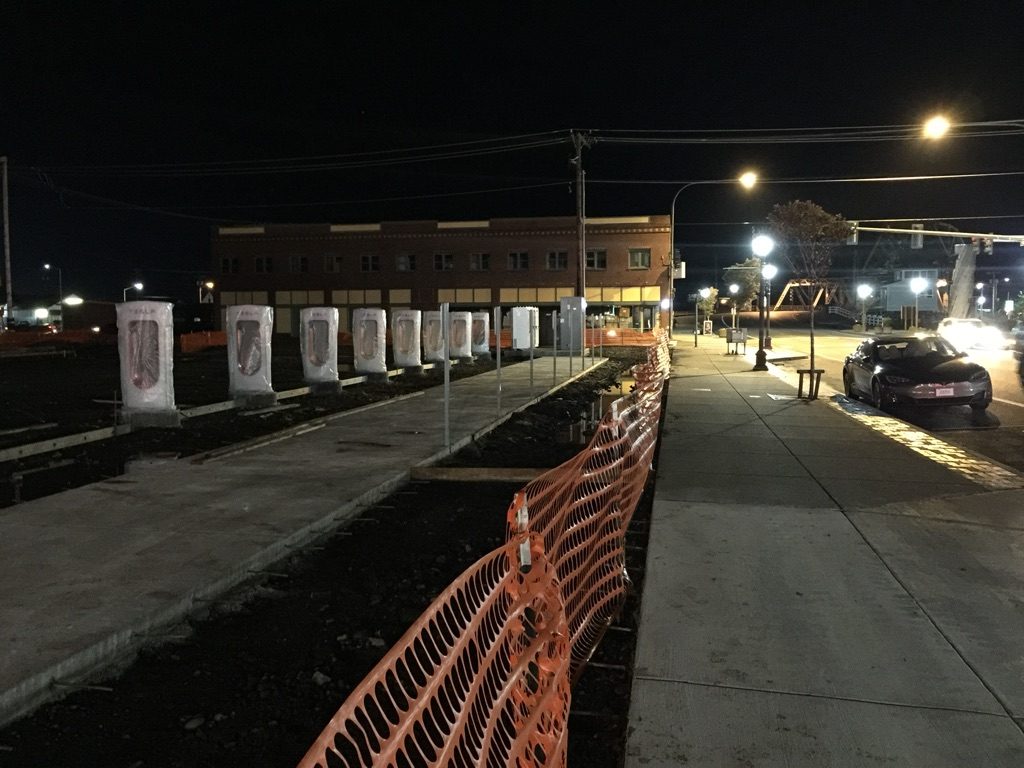
Tesla Supercharger station in Aberdeen, Washington during construction [Credit: Trebor Thickweb via app check-in]
As noted in the Aberdeen City Council meeting agenda dated July 13, 2016, the lease language at that time included (see page three):
“The Mayor has negotiated with Tesla Motors, Inc. for the construction of a Tesla supercharger station in Aberdeen on the city of the former Chevron station. The supercharger will be incorporated into the design of the Gateway Center. … the city will also be responsible for… paying the utility bills for Tesla vehicles that use the charging station, up to monthly cap of $2,000 per month.” (Emphasis added.)
Reading further, Item 8 of that actual lease agreement specifies that:
“Tesla agrees to arrange for all Tesla-related utility services provided or used in or at the Premises… Tesla shall pay directly to the utility company the cost of installation of any all such Tesla-related utility services and shall arrange to have the utility service separately metered. (Counterparty) shall be responsible for paying all utility bills related to such meter after installation, including payment for electricity consumed at the Premises during the Term, up to two thousand dollars ($2,000) per month.” (Emphasis added.)
Other Cities, Other Charging Stations
Tesla lease agreements with city governments aren’t new. Similar charging stations exist in five other Washington cities: Centralia, Burlington, Ellensburg, Kennewick, and Ritzville. There are eleven Supercharger stations in Oregon. All are located on either hotel/resort type private property or some other type of retail/outlet center. But the Aberdeen location is on a city-owned lot.
In California, two Supercharging stations on publicly owned property exist in Ukiah and Crescent City. But the terms negotiated by those cities for the stations are jarringly different from those negotiated for the Aberdeen site:
In Ukiah:
– “Tesla pays for the entire project, including staff time and utility costs.” (Ukiah Daily Journal, August 8, 2015.)
In Crescent City:
- The city is being paid by the tenant for use of its property. A proposal by Recargo, Inc. to build and operate a universal electric vehicle charging station in Crescent City included a $4,800 annual payment from Recargo to the district for use of the property. (Del Norte Triplicate, October 11, 2016.)
- “Essential components” of the city’s lease agreement with Tesla includes: “(1) the term, which is five years with two five-year options to renew, (2) Tesla will build and maintain the facility, and (3) the lease amount is one dollar per month.” (City of Crescent City Council Agenda Report, April 6, 2015.)
- Tenant “agrees to arrange for and pay for all Tenant-related utility services provided or used in or at the Premises during the term of the Lease.” (#10 – Utilities – City of Crescent City Ground Lease for Tesla Supercharging Station, April 6, 2015.)
- “Tenant shall pay directly to the utility company the cost of installation of any and all such Tenant-related utility services and shall arrange to have the utility service separately metered.” (#10, Utilities – City of Crescent City Ground Lease for Tesla Supercharging Station, April 6, 2015.)
In Aberdeen:
- The city (re: taxpayers) could get stuck with “up to 30,000 for the costs of installing the new infrastructure for the city” per the re-negotiated August agreement.
- The provision requiring the city to pay for electricity used by Tesla vehicles was removed.
- The proposed new lease requires Tesla to pay for all costs of charging Tesla vehicles.
- The lease also requires Tesla to install infrastructure “that would allow the city to add charging stations for other electric vehicles at some point in the future.”
- The city “will reimburse Tesla up to $30,000 for the costs of installing the new infrastructure for the city.” (Emphasis added.)
According to minutes from the August 24, 2016 Aberdeen City Council Meeting, a motion to adopt the re-negotiated lease agreement carried.
An interesting wrinkle, as announced by Tesla on November 7, 2016, is that Tesla has decided to stop offering unlimited free use of its network fast-charging stations worldwide beginning this year.
So, other than hopes of helping “attract potential tenants to the center as the first project participant” and providing “nearby restaurants and retailers with additional business” per Mayor Larson, just how, exactly, does the supercharging station tangibly benefit Aberdeen taxpayers or offset “up to $30,000” in reimbursements to Tesla “for the costs of installing the new infrastructure for the city”?
The Daily World reports that “A $30,000 grant will help Aberdeen reimburse Tesla for installing the station.” In light of the agreements hammered out with other cities for charging stations on public land, however, why is Aberdeen on the hook for reimbursing Tesla for any installation costs?
Another wrinkle:
According to an October 28, 2016 story in The Daily World, five Aberdeen sites were in the running as possible locations for the new Supercharger station, including the parking area for the Center. Larson explains:
“They (Tesla) could have easily worked with Gateway Mall or sought out private ownership, but they were interested in the Gateway Center parking lot.”
Why was a publicly owned site selected instead of a privately owned one? Is city government using public funds to compete with private business?
Additional questions swirl around Mayor Larson’s financial interest in Tesla Motors.
Some questions:
- Did Mayor Larson disclose his financial interest/common stock in Tesla Motor Company anywhere other than on his 2015 and 2016 PDC F-1 forms?
- As a candidate, Mayor Larson reported his stock value as $4.5K – $23.9K. After he was elected, he reported the value as $24K – 47.9K. What’s up with that?
- The mayor apparently handled all negotiations with Tesla, even though he had/has a financial interest in the motor company (See PDC F-1 forms, above). Did the city know about his financial interest in this company? If so, did it okay the mayor as negotiator of the Tesla lease agreement anyway? Why?
Perhaps a contract negotiator sans an apparent financial interest in the project under negotiation might be a good idea?
While we’re raising questions, what of Shoeless Joe? After the Black Sox scandal, Jackson never set foot on a professional baseball diamond again. He was banned for life along with seven other Chicago players for their alleged involvement in intentionally throwing the 1919 World Series to the Cincinnati Reds. Jackson’s alleged involvement in the conspiracy is still the subject of hot debate. Some maintain that the only things Joe was guilty of were being young, ambitious, gifted, and a bit naive.
Ring any bells?
Kristine Lowder
This guest post was written by Kristine Lowder of Conservelocity. Do you have a post you’d like to share? Email it to us at info@teslarati.com
News
Tesla pushes crazy ‘Luxe’ incentive package on flagship Model S and X
Tesla is pushing more customers to the Model S and Model X with a new incentive package.
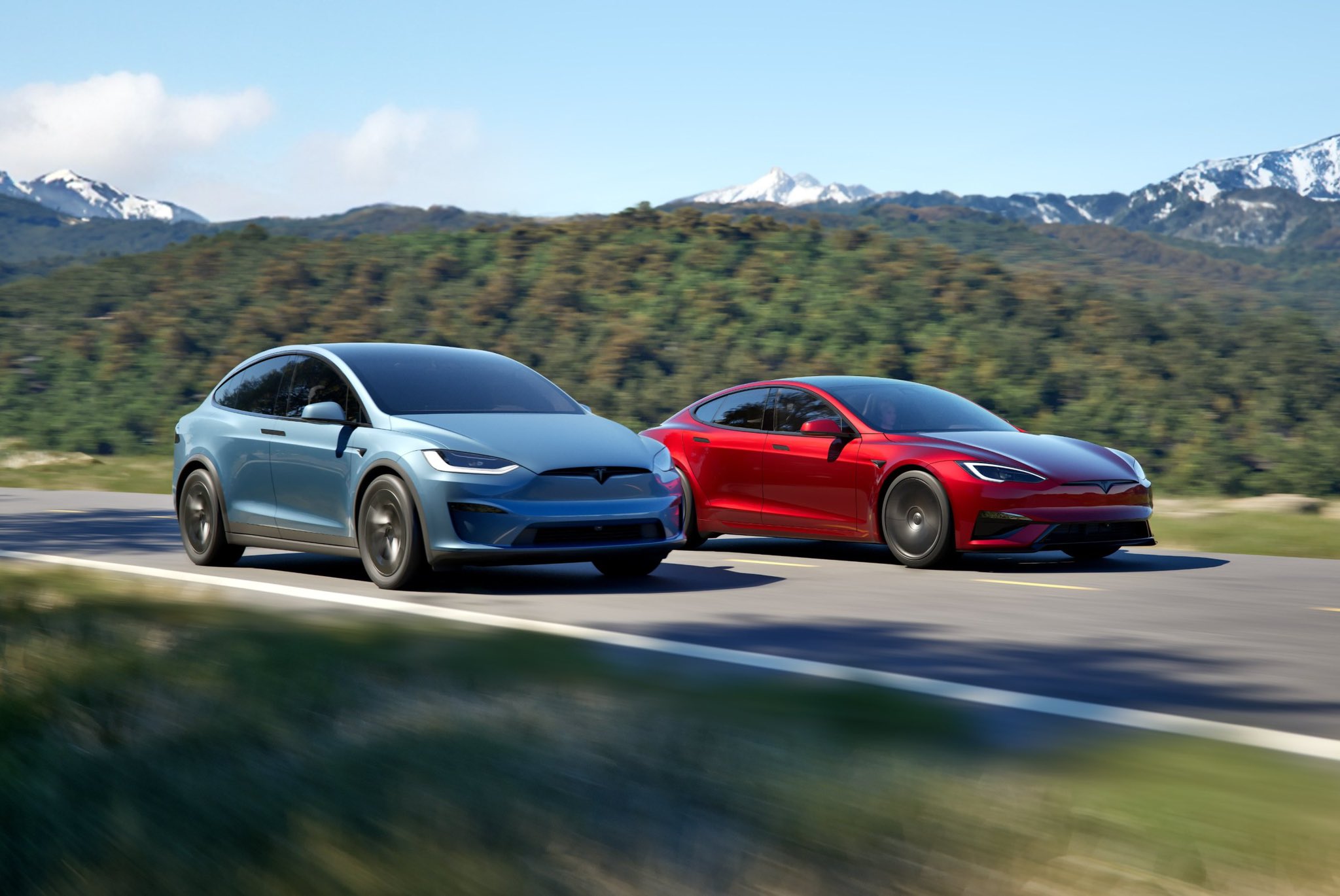
Tesla has pushed a crazy new incentive package, known as the “Luxe Package,” on the flagship Model S and Model X, along with a $10,000 price increase on each trim level.
The move aims to likely bolster margins for the company on the two cars while also giving those who choose to buy the Tesla lineup mainstays a variety of awesome advantages, including Free Supercharging, Full Self-Driving, and other add-ons.
Tesla is offering a crazy Supercharging incentive on its two ‘sentimental’ vehicles
Last night, Tesla launched the “Luxe Package” for the Model S and Model X, which includes the following four add-ons:
- Full Self-Driving (Supervised) – Your car will be able to drive itself almost anywhere with minimal driver intervention
- Four-Year Premium Service – Wheel and Tire Protection, Windshield Protection, and Recommended Maintenance
- Supercharging – Charge for free at 70,000+ Superchargers worldwide
- Premium Connectivity – Listen to music, stream movies, monitor live traffic, and more – no Wi-Fi needed
Full Self-Driving is priced at $8,000. Free Supercharging for the life of the car is between $10,000 and $15,000 over the life of the vehicle, although Tesla has valued it at $5,000 in recent promotions.
Free Premium Connectivity is roughly $1,000, and the four-year tire, wheel, windshield, and maintenance plan is about $3,200.
🚨 Tesla increased the price of both the Model S and Model X by $10,000, but both vehicles now include the “Luxe Package,” which includes:
-Full Self-Driving
-Four years of included maintenance, tire and wheel repairs, and windshield repairs/replacements
-Free lifetime… pic.twitter.com/LKv7rXruml— TESLARATI (@Teslarati) August 16, 2025
In all, the value is over $25,000, but this is loosely based on usage.
The Model S and Model X are low contributors to Tesla’s overall sales figures, as they make up less than five percent of sales from a quarterly perspective and have for some time.
As they are certainly the luxury choices in Tesla’s lineup, the Model 3 and Model Y are the bigger focus for the company, as a significantly larger portion of the company’s sales is made up of those vehicles.
The Luxe Package is an especially good idea for those who drive high-mileage and plan to use the Model S or Model X for commuting or long drives. The free Supercharging makes the deal worth it on its own.
As for the price bumps, each of the vehicles are now priced as follows:
- Model S All-Wheel-Drive: $94,990
- Model S Plaid: $109,990
- Model X All-Wheel-Drive: $99,990
- Model X Plaid: $114,990
News
Tesla Roadster could have a formidable competitor with BYD’s 3000-HP supercar
The Roadster is one of the most anticipated vehicles of all time, especially because we’ve all had to wait so long for it. On its own, it will have a 1.9-second 0-60 MPH acceleration rate, which is projected to be better than the 2.3 seconds the U9 Track Edition will offer.
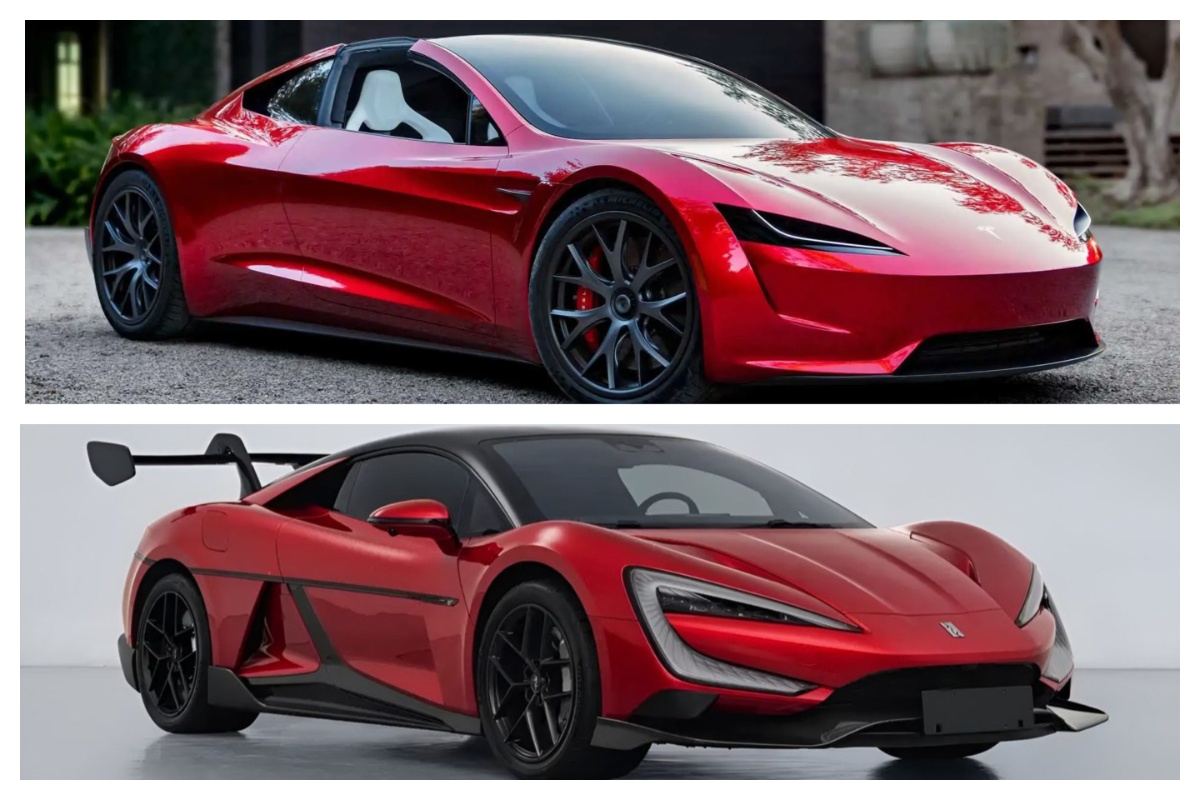
The Tesla Roadster is on the way, and yes, we know we’ve heard that for quite a few years. But when it comes, it might have a formidable competitor, and it might come from no one other than Chinese rival BYD.
BYD’s Yangwang U9 Track Edition is a new configuration of the U9 supercar that hit the Chinese Ministry of Information Technology (MIIT) database recently.
The vehicle was first spotted on the MIIT database by CarNewsChina. It will have a quad-motor powertrain, each dedicated to one wheel. Instead of the 1,287 horsepower that comes with the standard U9 configuration, the Track Edition will have 2,977.
There are only two cars that even come close in terms of horsepower: the Lotus Evija with 1,972 and the Rimac Nevera at 1,914 horsepower. The Tesla Roadster is expected to have somewhere around 1,000 horsepower.
The Roadster is one of the most anticipated vehicles of all time, especially because we’ve all had to wait so long for it. On its own, it will have a 1.9-second 0-60 MPH acceleration rate (without the SpaceX package, which brings the projection to 1.1 seconds), which is projected to be better than the 2.3 seconds the U9 Track Edition will offer.
The Roadster also beats the U9 Track Edition in projected top speed and range. The Roadster could top out at over 250 MPH, compared to the 217 conservative projection for the U9 Track Edition.
Range on the Roadster is 620 miles, beating 280 miles for the BYD.
- Credit: BYD
- Credit: BYD
The U9 Track Edition will also have some additional features compared to its base model. These include some aerodynamic additions, like a carbon fiber rear wing, diffuser, and an adjustable front splitter and adjustable rear wing.
The latter two are optional, but if you have enough scratch to drop on this car, you’re probably adding those two features as well.
We hope that both the Roadster and U9 Track Edition will hit a drag strip, road course, or even a superspeedway for some racing. It would truly be something for EV fans to drool over.
News
Tesla is breaking even its own rules to cap off an intense Q3
Tesla is pulling out all the stops to have a strong Q3 as the EV tax credit will phase out.
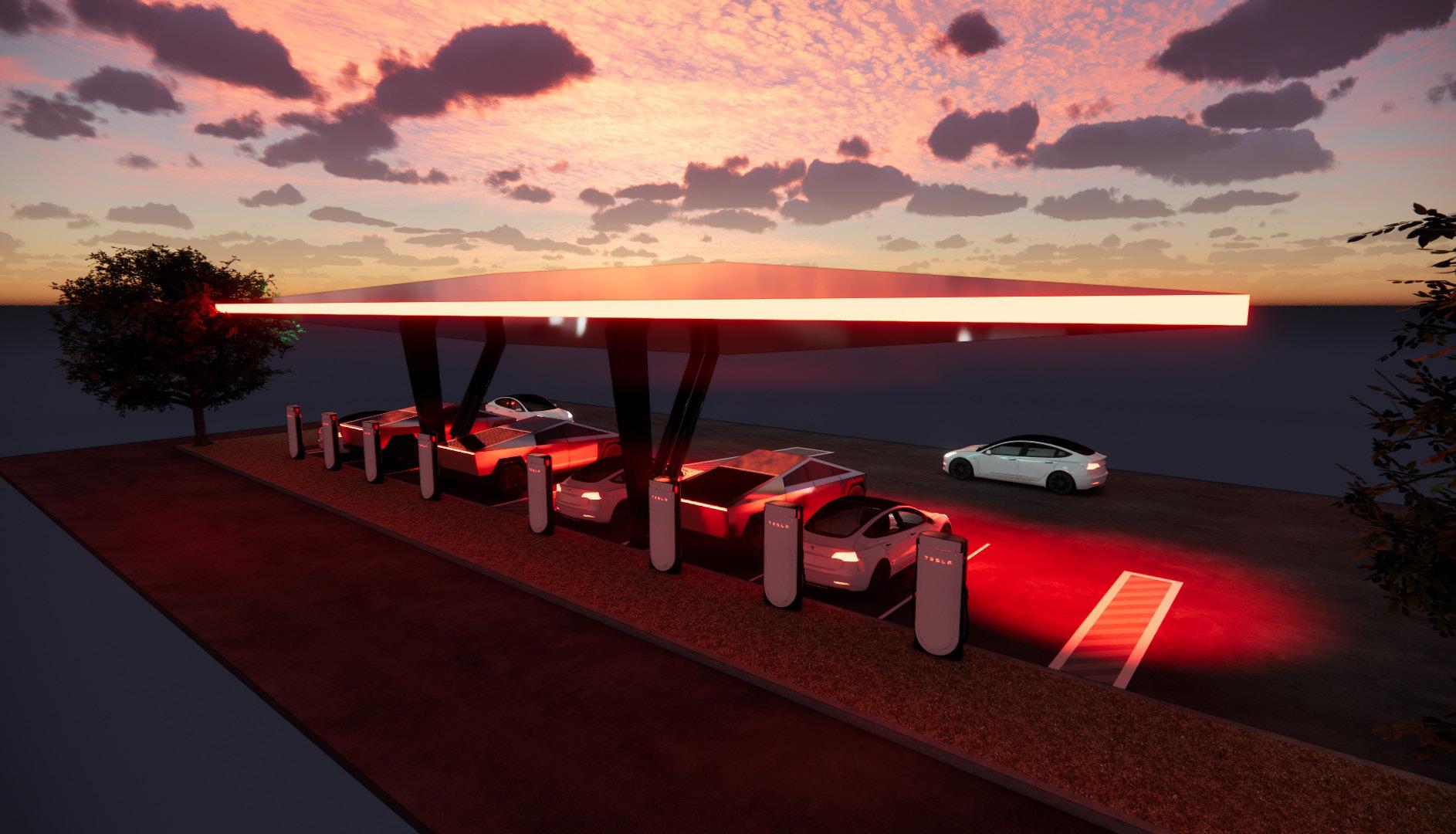
Tesla is breaking its own rules by advertising on various platforms in an effort to sell as many cars as possible before the end of the $7,500 electric vehicle tax credit.
Tesla has had a very polarizing perspective on advertising. Over the years, it has taken on different attitudes toward spending any money on marketing. It has instead put those dollars into research and development to make its vehicles more advanced.
Back in 2019, Tesla CEO Elon Musk talked about the company advertising its vehicles and energy products:
Tesla does not advertise or pay for endorsements. Instead, we use that money to make the product great. https://t.co/SsrfOq1Xyc
— Elon Musk (@elonmusk) May 19, 2019
In 2021, in response to analyst Gary Black, who has pushed for Tesla to have a PR or marketing department, Musk said:
Other companies spend money on advertising & manipulating public opinion, Tesla focuses on the product.
I trust the people.
— Elon Musk (@elonmusk) April 27, 2021
However, this did not hold as Tesla’s strategy for the long haul. While Musk did resist advertising for a long time, Tesla started placing ads on platforms like X, Google, and YouTube several years back. It’s pretty rare that Tesla pushes these ads, however.
Tesla launches advertising on X in the U.S., expanding ‘small scale’ strategy outlined by Musk
The company’s stance on setting aside capital for advertising seems to be circumstantial. Right now, it is working to sell as many vehicles as it can before the tax credit comes to a close.
As a result, it is pushing some ads on YouTube:
$TSLA is starting to advertise on YouTube. pic.twitter.com/1cwO2KNzJm
— Cole Grinde (@GrindeOptions) August 15, 2025
It’s a move that makes sense considering the timing. With just six weeks roughly left in the quarter, Tesla is going to work tirelessly to push as many cars into customer hands as possible. It will use every ounce of effort to get its products on people’s screens.
Tesla counters jab at lack of advertising with perfect response
Throw in one of the many incentives it is offering currently, and there will surely be some takers.
-
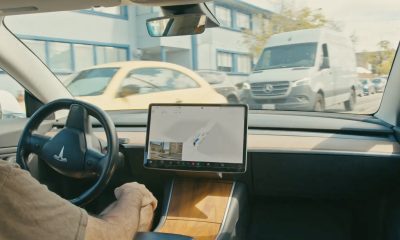
 Elon Musk1 week ago
Elon Musk1 week agoElon Musk teases crazy new Tesla FSD model: here’s when it’s coming
-
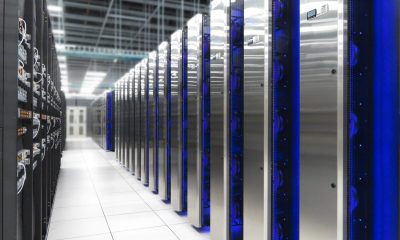
 Elon Musk1 week ago
Elon Musk1 week agoElon Musk confirms Tesla AI6 chip is Project Dojo’s successor
-
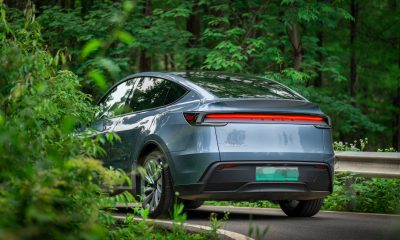
 News1 week ago
News1 week agoTesla Model Y L reportedly entered mass production in Giga Shanghai
-
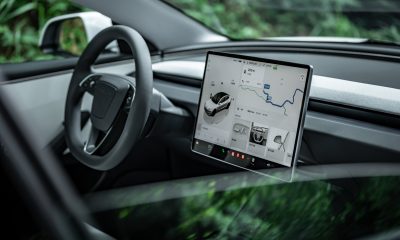
 Elon Musk1 week ago
Elon Musk1 week agoTesla CEO Elon Musk details massive FSD update set for September release
-

 Cybertruck1 week ago
Cybertruck1 week agoTesla’s new upgrade makes the Cybertruck extra-terrestrial
-

 News5 days ago
News5 days agoElon Musk reaffirms Tesla Semi mass production in 2026
-
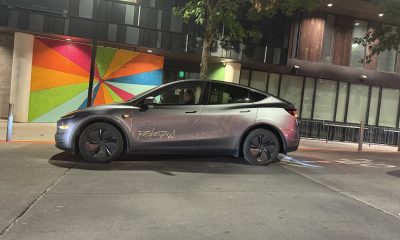
 Elon Musk2 weeks ago
Elon Musk2 weeks agoTesla ‘activist shareholders’ sue company and Elon Musk for Robotaxi rollout
-
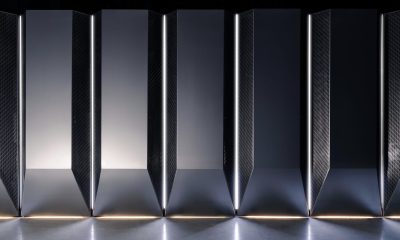
 News1 week ago
News1 week agoElon Musk explains why Tesla stepped back from Project Dojo

